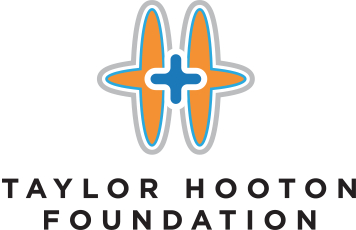The Surprising and Not-So-Surprising Findings
by TC Luoma | 01/06/21
Original Article: https://www.t-nation.com/living/anabolic-steroids-a-survey-of-2385-men

Steroid users don’t typically tell you that they’re steroid users. Generally, they’d rather confess to being adulterers or thieves or even bed wetters rather than let you know that their overblown physiques were the result of anything else other than hard work and having some serious nutrition chops.
They won’t even tell their doctors because they don’t want to be lectured by some pasty-face mofo who, snort, can’t even bench press his or her bodyweight.
There is, apparently, one way to get around the secretive nature of steroid users – you do an anonymous on-line study/survey, and that’s exactly what some endocrinologists at Wake Forest University did. The result was the largest survey of steroid users ever done.
The survey involved 2385 men and was conducted between August 2019 and August 2020. Just over 50 percent of the participants were from the U.S. and the average age of all participants was 31.
Here’s a synopsis of what they found:
Age Breakdown of Steroid Users
- Age 18-21: 12.91%
- Age 22-30: 42.85%
- Age 31-40: 24.49%
- Age 41-50: 14.13%
- Age 51-Plus: 5.62%
Motivations for Using Anabolic Steroids
The primary motivations for using steroids were improving appearance (82.2%) and increasing strength (50%). Self-esteem or body image issues also ranked high (29.87%).
Perhaps surprisingly, less than 10 percent of the respondents used steroids to improve athletic performance.
Also a little surprising: Men over 35 were less likely to use steroids for body image issues, strength-building, or even bodybuilding competitions than younger men (20.2% vs. 41.9%), which begs the question, what the eff were the older-than-35 guys using them for then?

Most Popular Steroids
Testosterone enanthate and testosterone cypionate were the most popular steroids (almost certainly because, at least in the U.S., they’re the most easily available). The other steroids in the top ten are listed below:
- 3rd – Methandrostenolone
- 4th – Trenbolone
- 5th – Oxandrolone
- 6th – Nandrolone Decanoate
- 7th – Equipoise
- 8th – Testosterone Propionate
- 9th – Stanozolol
- 10th – Sustanon 250
Most Common Weekly Doses
- Less Than 500 mg – 46%
- 501-1000 mg – 47.46%
- 1001-2000 mg – 5.49%
- 2001- 3000 mg – 0.75%
- 3001- 4000 mg – 0.17%
- Over 5001 mg – 0.08%
- 4001 – 5000 mg – 0.04%
Most Commonly Used Accessory Drugs
During a cycle, the most common accessory drugs were anastrozole, aka Arimidex (47.61%), and tamoxifen (31.12%) followed by exemestane (30.16%) and hCG (28.61%).
Off-cycle, the most commonly used accessory drugs were tamoxifen (40.23%), clomiphene citrate (31.63%), and hCG (25.59%).
Surprisingly, only 45.93% of respondents even bothered to cycle. Most (47.21%) reported continuous use.
Most Commonly Reported Side Effects
Over 94 percent of participants reported side effects:
- Testicular Atrophy – 62.94%
- Hypersexuality – 50.69%
- Hypertension – 43.44%
- Mood Changes – 42.64%
- Erectile Dysfunction – 32.96%
- Dyslipidemia (abnormal blood fats) – 27.97%
- Gynecomastia – 26.08%
Some symptoms were more prevalent in users over 35 years old:
- Dyslipidemia – 32.91% vs. 25.88%
- Hair Loss – 27.12% vs. 20.69%
- Tendon Rupture – 9.89% vs. 6.92%
- Left Ventricular Hypertrophy – 6.64% vs. 2.92%
- Infertility – 9.82% vs. 6.92%
- Injection Site Abscess – 12.43% vs. 8.05%
- Polycythemia (increase in number of red blood cells) – 20.9% vs. 9.0%

Reasons for Not Quitting
While 46.2 percent tried to quit at one time or another, over 60 percent returned to using anabolic steroids.
This was true even after a prolonged cessation of use, as 44.8% of those who had quit for a year started using again, as did 20.8% of those who had stopped for a three-year period.
Reasons for not quitting included concerns over decreased quality of life (48.93%), muscle loss/worsened appearance (39.3%), decreased strength/athletic performance (33.5%), and, sadly, lack of medical support (14.21%).
Tellingly, 74.7 percent were convinced that it’s possible to continue steroid use without damaging their health, but 86.7 percent claimed they’d quit if some health problem arose from using steroids.
Who Do They Ask for Advice?
It was almost universally believed that internet steroid gurus were much more reliable sources of information than doctors. In fact, doctors came in LAST regarding knowledge of anabolic steroids, with steroid coaches/gurus, bodybuilding websites, and other steroid users ranking higher in favorability.
Do They Even Tell Their Doctors?
Over 50 percent of users refrain from telling their doctors about their steroid use because they fear being stigmatized and not treated fairly. And, in those who did tell their docs, 55.3 percent of them found out they were right – their doctors did stigmatize them and treat them unfairly. So it goes.

Lessons Learned (by the Researchers)
While the authors of the study see the need for additional trials, the current study proved that “the broad distrust of health care professionals will make recruitment for such studies increasingly difficult.”
They did see, however, as their first step that “…medical education should emphasize the importance of an informed, nonjudgmental, and harm-mitigation approach to these patients. A multidisciplinary approach that includes medical professionals, addiction support groups, and behavioral health specialists is essential to support successful harm reduction and cessation of AAS use.”
From their lips to God’s ears.
Source
- Alex K. Bonnecaze, Thomas O’Connor, Joseph A. Aloi, “Characteristics and Attitudes of Men Using Anabolic Androgenic Steroids (AAS): A Survey of 2385 Men,” American Journal of Men’s Health, November-December 1-12, 2020.
